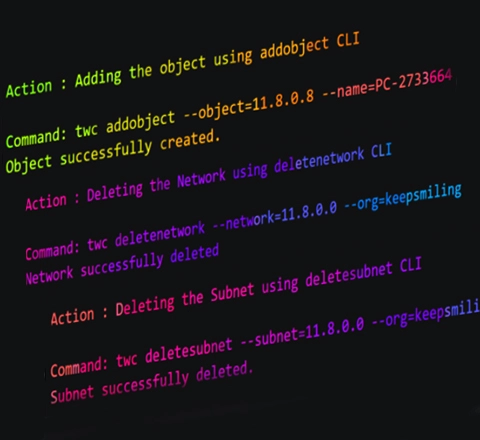TCPWave offers a comprehensive suite of command-line interfaces
(CLIs) to help you efficiently manage your DDI (DNS, DHCP & IPAM) and
ADC (Application Delivery Controller) operations. Our CLIs are
designed to provide an intuitive and user-friendly experience,
allowing you to perform add, edit, and delete operations with ease.
The CLIs are designed to streamline your DNS (Domain Name System) and
Load Balancer management experience, making it simple to perform
various tasks. The DDI and ADC operations encompass a variety of
tasks, such as IPv4 (Internet Protocol version 4) and IPv6 (Internet
Protocol version 6) data management for DNS and DHCP, creating a VIP
(Virtual IP) on a load balancer, discovering network devices,
executing scheduled jobs, reporting, checking configuration assurance
policies and managing zone monitoring. These diverse operations
enable better control and visibility over your network environment,
ultimately enhancing its performance and stability. Scripting becomes
a relatively easy task using the CLIs.

















